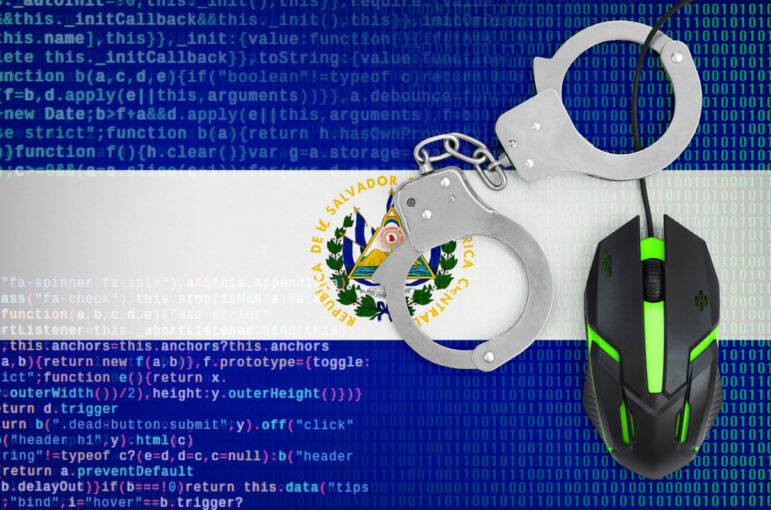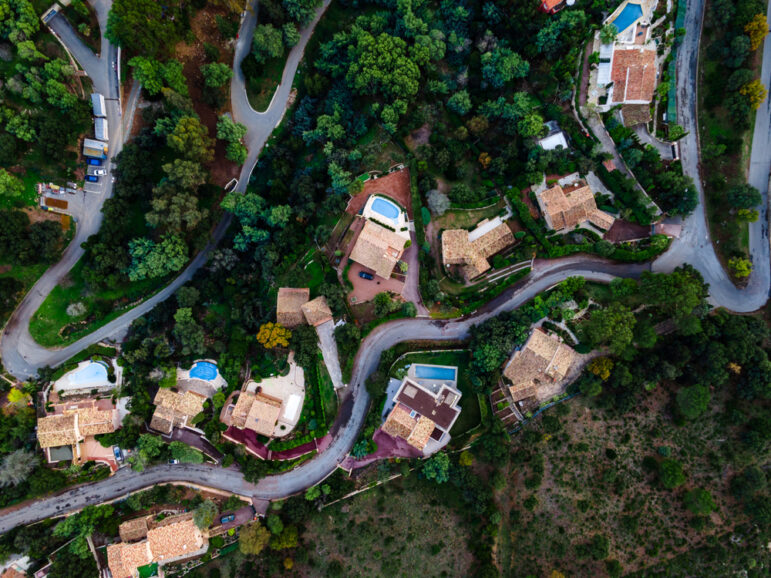

Image: Shutterstock
Investigative Tactics That Reporters Love
Read this article in
Over the past year, I’ve had the opportunity to interview dozens of investigative journalists about their favorite tools and techniques. In a series of stories, their tips have shown our global audience of reporters that there are scores of muckraking tactics that can help their reporting, and that effective digital tools constantly emerge that can help them dig. But again and again, these top muckrakers point to roughly two dozen techniques that assist in almost all of their investigations, and consistently impress with their effectiveness.
Most of these require no cost or computer science skills, and some involve the simplest adjustments to allow investigators to access tough sources or find elusive evidence.
In part two of this piece next week, I’ll list the dozen tools that have emerged as common favorites for many reporters. But here, in part one, I list the dozen tactics and approaches that leading investigative journalists commonly rave about.
When approaching strangers at home, use the binder-under-the-arm trick. Conscious of the common problem investigative reporters face when arriving “cold” at the home of a potential source — where, like a door-to-door salesperson, the door might be slammed in your face in seconds — New York Times reporter Russ Buettner found a tactic to keep the door open just long enough to make a pitch for an interview. His tip is to arrive on the doorstep with a thick binder under your arm. Buettner — who used this tactic to break the Pulitzer-winning Trump business tax scams story — explained that the mere sight of a thick file implies that the reporter already knows most of the facts, and can reduce the resident’s fear that they might be responsible for the story’s core allegations. The binder, he noted, can be filled with blank paper, or junk mail, or anything, just so long as it’s clearly visible.
Scour Google Maps to find leads for CCTV footage. Zoom in on Google Maps until the names of any nearby stores pop up, and, where appropriate, call the managers of those stores to request any CCTV video that might show parts of the event. If they decline, send them a copy of your first story on the incident — and then ask again. Journalists say store managers often change their minds after seeing your intent.

This slide shows some of the open source tools and extensions that BuzzFeed’s Jane Lytvynenko considers “indispensable” for investigating disinformation on major channels — especially from right wing groups. Slide: Courtesy Jane Lytvynenko
Dig deeper using simple search operators. One digital digging method that leading investigative reporters use every day is also arguably the most powerful: Boolean operators. Most Google users already know how to narrow searches with quotation marks around keywords, and how to use capitalized terms like “OR” to instruct the search engine to consider alternatives. But other basic operators, which have been around for years, are now routinely used by reporters:
- “Site:” to narrow your search to a domain, like “site:UK” to restrict it to the United Kingdom, or “site:https://gijn.org” to restrict it to searches of a particular website.
- “Ext:” to find documents in PDF, CSV, and DOC formats.
- “AROUND(*)” in caps between two keywords, to find documents where you suspect two terms might appear in the same paragraph. You can experiment with numbers to add within the parenthesis, to guess the total number of words that might appear between the key terms — perhaps 17 for a sentence, or seven for a headline.
- The “excluding trick.” If you find a mysterious video clip or image on a major social media platform, find where else it appeared by pasting the link into Google and exclude that platform with a minus sign, like “-site:youtube.com” or “-site:Instagram.com”. The minus sign can also exclude any term, or be used to search for references to someone prior to their new role.
Adopt a literal mindset in your search. For instance, to find an interview of a subject, try a phrase that interview might feature — such as “Smith says” or “Smith said” — rather than a term like “interview,” which is unlikely to appear in the original text. To find a map, use a keyword alongside a word that normally appears on maps — such as “scale,” rather than “map.”
Use the “geocode trick” to find witnesses and leads in real time. Several journalists describe this method as a game-changer — especially for quick-turnaround investigations. Type the rough location or address of an event into Google Maps, right click, and copy the longitude and latitude that pops up under the “What’s Here” option. Go to TweetDeck, type in “geocode:” (including the colon) and paste that code alongside — but ensure that you remove any spaces or dashes. Finally, just add a comma and a radius — like “, 1mi” for one mile — and you’ll get all the Tweets and social media images from within that radius. You can narrow the search further with keywords, such as “raid” or “cops,” to find posts in that location where users reference a common theme.
Embrace free, user-friendly encryption tools. Don’t delay in setting up a Protonmail account for encrypted emails, and a Signal account for secure texts. Use a free password manager trusted by journalists, like LastPass, that will generate secure passwords beneath a single master password that you choose. Use a well-protected browser like Firefox.
If your country does not have freedom of information laws, file FOI requests in countries that do — especially in surveillance and security investigations. Given the multinational nature of the big surveillance technology companies — and the prevalence of security cooperation between governments — the Electronic Frontier Foundation’s Beryl Lipton says reporters anywhere can potentially find clues about local spyware by searching public records in countries with freedom of information provisions. Check out GIJN’s guide to using FOI and Right to Information, or RTI laws, around the world, including a spreadsheet on where foreign FOI requests are permitted. Also, see IRE’s guide to making cross-border FOI requests. Another favorite tactic to uncover surveillance is to flag the international movements of companies that say they sell their spyware only to nation-states. Israel-based NSO Group, Bulgaria-based Circles, and Cellebrite are three such firms, according to human rights research groups.

Investigative reporters embedded with crematoria workers in Lima to help gauge the true COVID-19 death toll in Peru. Photo: Omar Lucas. Image: Courtesy IDL-Reporteros
Use proxy sources and datasets to measure COVID-19 deaths. From Somalia to Peru, reporters have used innovative methods to investigate pandemic death toll claims reported by national and regional authorities — and found dramatic undercounts in most cases. The proxy sources they used included ambulance drivers, emergency services audio, gravediggers, crematoria companies, and local open data portals. Several newsrooms also contrasted total deaths — sometimes called “all-cause mortality” – with prior periods to identify excess deaths that coincide with the pandemic. Data scraping efforts of obituaries generally proved less effective — but satellite images of new mass graves provided powerful evidence of mortality surges.
Ask foreign colleagues to approach reluctant government officials. It’s not clear why it works, but journalists from several outlets tell GIJN that senior government officials tend to be more likely to speak on sensitive issues when the call comes from a journalist outside the country. In a coordinated, successful strategy for one recent investigation, a Peru-based reporter with nonprofit newsroom OjoPúblico — a GIJN member — called authorities in Chile; a colleague in Chile called authorities in Argentina; and their colleague in Argentina called authorities in Mexico. Meanwhile, Washington, DC-based Will Fitzgibbon at the International Consortium of Investigative Journalists said cross-border calls were now a common strategy at ICIJ. For instance, he said that a Togolese politician took his call — having declined calls from Togo-based colleagues — when Washington’s “202” dialing code appeared on the phone. The official mistakenly thought someone from Togo’s embassy in the United States was on the line.
If you’re in an autocracy, report like you’re in a democracy. Leading editors offer some radical-sounding advice to fellow journalists in authoritarian countries: work and report as if institutions of justice and accountability function in your society. At the RightsCon summit in May, veteran investigative editor Nic Dawes noted the courage this tactic requires, but summed up its fundamental benefit this way: “One of the ways you keep the democratic imagination alive is to act … as if it’s a democracy.” Editors report that this mindset helps prevent self-censorship, while also keeping the accountability bar high for oppressed audiences.
Draw reclusive subjects into the open by tapping their pride. It turns out that even bad actors can be motivated by righteous indignation — and subjects refusing comment can be drawn into responding with this tactic: challenge the subject on the one thing they know they did right. Here was my own experience with this approach: While reporting for South Africa’s Sunday Times, I could not get an interview with a government contractor who built public houses for the poor that were so substandard many collapsed in a mild storm, causing serious injuries. A building inspector we hired discovered a dozen major problems with the construction materials, but, as an aside, noted that the bricks themselves were excellent. In my final interview request to the contractor, I told him “there are questions about the quality of the bricks you used.” The man was so indignant that he agreed to the interview and even posed for a photograph in front of his good bricks — used in a collapsed house.
Trust agreements with your media rivals. Evidence shows that collaboration really does turbo-charge — not sabotage — complex investigations. From Russia to Chile, investigative editors consistently state that cross-border and “radical sharing” collaborations boost the digging power and impact of major investigations. At the same time, they say evidence from numerous projects shows that investigative newsrooms really can trust each other with sensitive information and joint deadlines. Editors insist that instances of outlets breaching deadline agreements and scooping their partners are now so rare that they’re not worth worrying about. One radical sharing project from the Democratic Republic of the Congo (DRC) shows how this strategy can pay off: the reporting side of the project was strengthened with special language skills from one newsroom, data skills from another, source-access resources of a third partner, and the sheer courage of local reporters on the ground. The audience trust and impact side was boosted by fact-reinforcement and cross-promotion, and safety was promoted as at-risk local reporters in the DRC could “report on the reporting” immediately after the joint publishing deadline.
Additional Resources
The Forensic Methods Reporters Are Using to Reveal Attacks by Security Forces
Tips for Investigating Far Right Groups around the World
Henk van Ess on Visual Thinking for Online Investigations
 Rowan Philp is a reporter for GIJN. He was formerly chief reporter for South Africa’s Sunday Times. As a foreign correspondent, he has reported on news, politics, corruption, and conflict from more than two dozen countries around the world.
Rowan Philp is a reporter for GIJN. He was formerly chief reporter for South Africa’s Sunday Times. As a foreign correspondent, he has reported on news, politics, corruption, and conflict from more than two dozen countries around the world.









